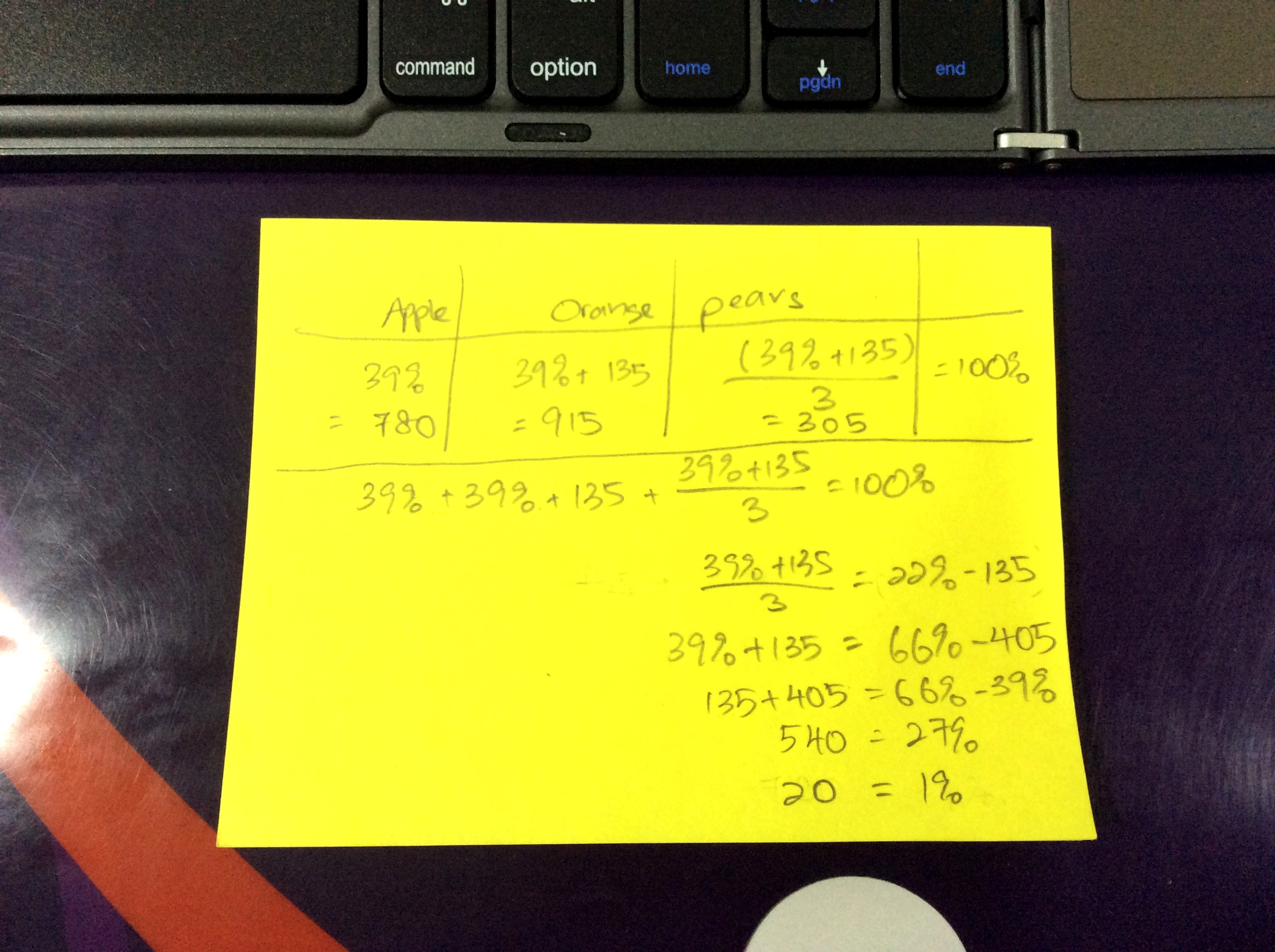Cynthia Chua's answer to Mandy's Primary 6 Maths Fractions Singapore question.
May I know how to get 789? Tks
This method is correct, but slightly too complex for Primary 6 students especially if it is not sufficiently explained. I have included a units version of my explanation in the main question’s chat box.
Mandy, the “780” is likely the tutor’s answers for the number of apples so you can cross check the validity of the answers at the end.
Mandy, the “780” is likely the tutor’s answers for the number of apples so you can cross check the validity of the answers at the end.
The 780 is answer she finds/calculates after finding what is 1%. She just wrote it on top. Same for 915 and 305.
Apples make up 39% of total number of fruits
Number of oranges
= 39% of total number of fruits + 135
= 3 x (13% of total number of fruits + 45)
These numbers are divisible by 3 and is what the question wants you to do.
Number of pears are ⅓ of the number of oranges.
Number of pears = 13% of total number of fruits + 45
Number of fruits that are oranges and pears
= (100% - 39%) of the total number of fruits
= 61% of the total number of fruits.
Number of thats are pears and oranges also = 13% of total number of fruits + 45 + 39% of total number of fruits + 135
= 52% of total number of fruits + 180
Comparing the two,
61% - 52% = 9%
So 9% → 180 fruits
1% → 180 fruits ÷ 9 = 20 fruits
Pears →13% + 45
= 13 x 20 + 45
= 260 + 45
= 305
The above working is best represented using models, where you can see how 61% and 52% + 180 equate to each other.
The idea is you can cut 39% into 3 equal parts and 135 into 3 equal parts then recombine into 4 sets, each set being 13% + 45.
Number of oranges
= 39% of total number of fruits + 135
= 3 x (13% of total number of fruits + 45)
These numbers are divisible by 3 and is what the question wants you to do.
Number of pears are ⅓ of the number of oranges.
Number of pears = 13% of total number of fruits + 45
Number of fruits that are oranges and pears
= (100% - 39%) of the total number of fruits
= 61% of the total number of fruits.
Number of thats are pears and oranges also = 13% of total number of fruits + 45 + 39% of total number of fruits + 135
= 52% of total number of fruits + 180
Comparing the two,
61% - 52% = 9%
So 9% → 180 fruits
1% → 180 fruits ÷ 9 = 20 fruits
Pears →13% + 45
= 13 x 20 + 45
= 260 + 45
= 305
The above working is best represented using models, where you can see how 61% and 52% + 180 equate to each other.
The idea is you can cut 39% into 3 equal parts and 135 into 3 equal parts then recombine into 4 sets, each set being 13% + 45.





